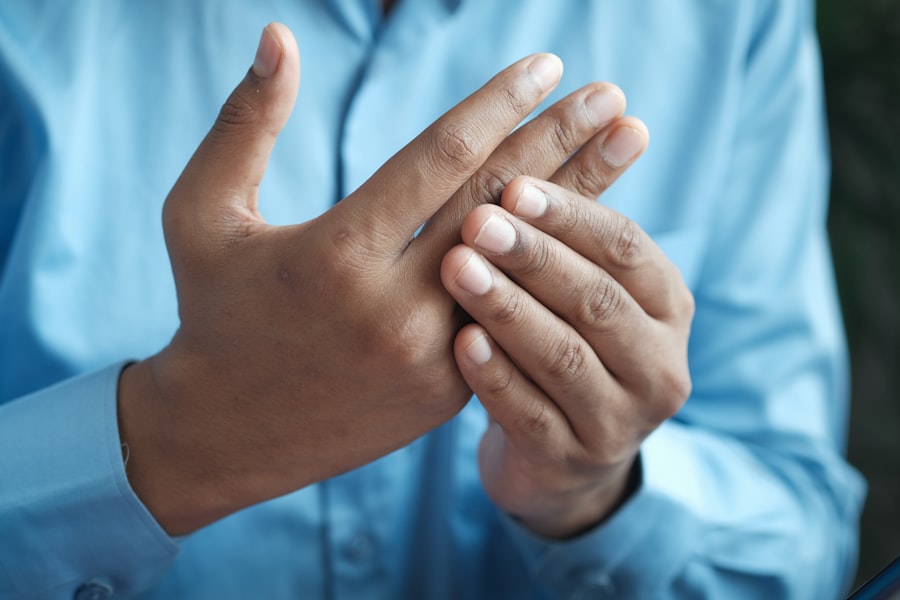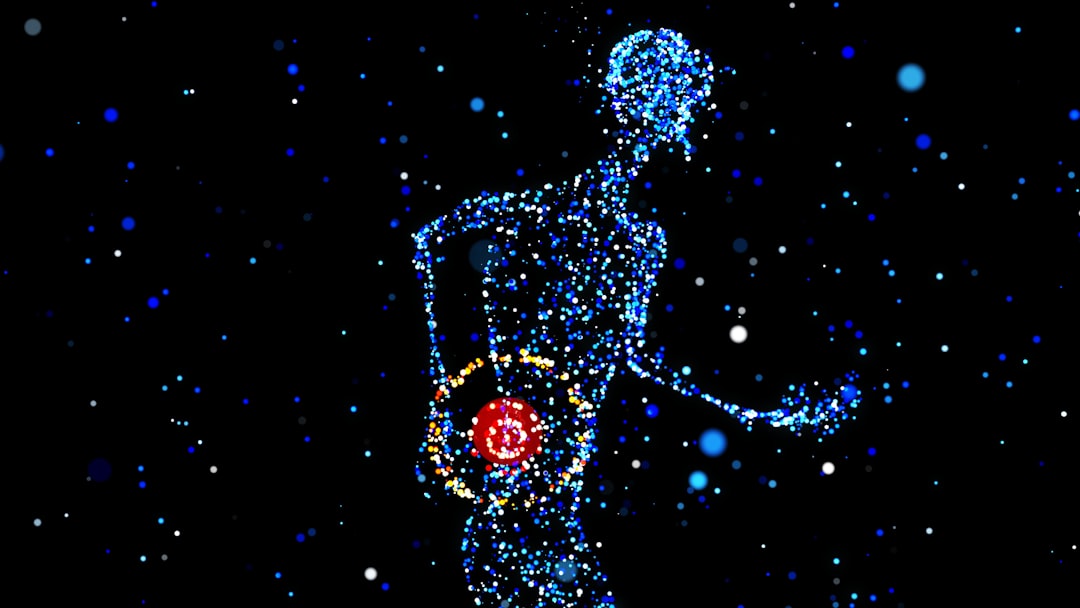Pain is often viewed as an unwelcome sensation, something to be avoided at all costs. However, it serves a critical purpose in the human experience. At its core, pain is a protective mechanism, alerting you to potential harm and prompting you to take action.
When you touch something hot, for instance, the immediate pain signals your brain to withdraw your hand, preventing further injury. This instinctual response is vital for survival, as it helps you avoid dangerous situations and encourages behaviors that promote healing. Moreover, pain can also serve as a teacher.
It can guide you in understanding your body and its limits. When you experience discomfort during physical activity, it may signal that you are overexerting yourself or that you need to adjust your technique. In this way, pain can foster a deeper awareness of your physical state, leading to better choices in the future.
While it may be uncomfortable, pain is an essential part of life that contributes to your overall well-being by encouraging caution and self-care.
Key Takeaways
- Pain serves as a warning signal to protect the body from harm and promote healing.
- The physiology of pain involves a complex interplay of sensory nerves, neurotransmitters, and the brain.
- Types of pain include nociceptive, neuropathic, and psychogenic, each with distinct characteristics and treatment approaches.
- Chronic pain can have a significant impact on physical and mental well-being, leading to disability and reduced quality of life.
- Pain management strategies encompass a multidisciplinary approach, including medication, physical therapy, and psychological interventions.
The Physiology of Pain
To understand pain, it is essential to delve into its physiological underpinnings. Pain begins with specialized nerve endings called nociceptors, which are distributed throughout your body. These receptors detect harmful stimuli—such as extreme temperatures, pressure, or chemical irritants—and transmit signals through your nervous system to your brain.
Once these signals reach the brain, they are processed and interpreted, resulting in the sensation of pain. The experience of pain is not merely a straightforward signal; it is influenced by various factors, including your emotional state, past experiences, and even cultural background. For instance, when you are anxious or stressed, your perception of pain may intensify.
This complex interplay between physiological and psychological factors highlights that pain is not just a physical sensation but a multifaceted experience shaped by numerous variables.
Types of Pain

Pain can be categorized into several types, each with distinct characteristics and implications for treatment. Acute pain is typically short-lived and arises from a specific injury or condition, such as a sprained ankle or a surgical procedure. This type of pain serves as a warning signal that something is wrong and usually resolves as the underlying issue heals.
On the other hand, chronic pain persists for an extended period—often defined as lasting longer than three months—and can arise from various conditions, including arthritis or fibromyalgia. Chronic pain can be particularly challenging to manage because it may not have a clear cause and can significantly impact your daily life. Understanding the different types of pain is crucial for developing effective treatment strategies tailored to your specific situation.
Chronic Pain and its Impact
| Category | Metrics |
|---|---|
| Prevalence | 20% of adults suffer from chronic pain |
| Impact on Daily Life | Chronic pain affects daily activities for 25 million adults |
| Work Productivity | Chronic pain results in 560 billion in lost productivity annually |
| Treatment Options | Only 58% of chronic pain patients receive adequate treatment |
Chronic pain can be debilitating, affecting not only your physical health but also your emotional and social well-being. Living with persistent pain can lead to feelings of frustration, helplessness, and even depression. You may find that your ability to engage in activities you once enjoyed diminishes, leading to social isolation and a decline in overall quality of life.
The impact of chronic pain extends beyond the individual; it can strain relationships with family and friends who may struggle to understand what you are going through. Additionally, the financial burden associated with ongoing medical treatments and potential loss of income can exacerbate feelings of stress and anxiety. Recognizing the far-reaching effects of chronic pain is essential for fostering empathy and support for those who endure it.
Pain Management Strategies
Managing pain effectively requires a multifaceted approach tailored to your unique needs. One common strategy is pharmacological intervention, which may include over-the-counter medications like ibuprofen or prescription opioids for more severe cases. However, relying solely on medication can lead to complications such as dependency or side effects.
In addition to medication, non-pharmacological approaches can be highly effective in managing pain. Physical therapy, for example, can help strengthen muscles and improve flexibility, reducing discomfort over time. Mindfulness practices such as meditation or yoga can also play a significant role in pain management by promoting relaxation and helping you develop coping strategies for dealing with discomfort.
Combining these various methods can create a comprehensive pain management plan that addresses both the physical and emotional aspects of your experience.
The Role of Pain in Injury Prevention

Pain plays a crucial role in injury prevention by serving as an early warning system for your body. When you experience discomfort during physical activity, it signals that you may be pushing yourself too hard or using improper techniques. This feedback allows you to adjust your movements or take a break before more severe injuries occur.
Moreover, understanding the relationship between pain and injury can empower you to make informed decisions about your health and fitness routines. By listening to your body and recognizing when something feels off, you can prevent minor issues from escalating into more significant problems. This proactive approach not only helps you maintain physical health but also fosters a greater sense of body awareness and self-care.
Pain as a Diagnostic Tool
Pain serves as an invaluable diagnostic tool in the medical field. When you report pain to a healthcare provider, it provides critical information about potential underlying conditions. For instance, sharp chest pain may indicate a heart issue, while localized abdominal pain could suggest appendicitis or another gastrointestinal problem.
Healthcare professionals often use the characteristics of your pain—such as its location, intensity, and duration—to guide their diagnostic process. This information helps them determine appropriate tests or imaging studies needed to identify the root cause of your discomfort. By understanding how pain functions as a diagnostic tool, you can better communicate with healthcare providers and advocate for your health.
Psychological and Emotional Aspects of Pain
The experience of pain is not solely physical; it is deeply intertwined with psychological and emotional factors. Your mental state can significantly influence how you perceive and cope with pain. For example, individuals who experience anxiety or depression may find their pain feels more intense or overwhelming than those who are in a more positive emotional state.
Additionally, chronic pain can lead to psychological challenges such as fear of movement or avoidance behaviors that further exacerbate the situation. Addressing these emotional aspects through therapy or support groups can be beneficial in managing both the psychological impact of pain and the physical sensations themselves. By acknowledging the interplay between mind and body, you can develop a more holistic approach to pain management.
Pain and Quality of Life
The relationship between pain and quality of life is profound. Chronic or severe pain can limit your ability to engage in daily activities, affecting everything from work performance to social interactions. You may find that simple tasks become daunting challenges when accompanied by persistent discomfort.
Improving quality of life for those experiencing pain often involves a combination of medical treatment and lifestyle adjustments. Engaging in regular physical activity tailored to your abilities can enhance mobility and reduce discomfort over time. Additionally, fostering strong social connections and seeking emotional support can help mitigate feelings of isolation and improve overall well-being.
By taking proactive steps toward managing pain, you can enhance your quality of life despite its challenges.
The Evolutionary Significance of Pain
From an evolutionary perspective, pain has played a vital role in human survival. It has shaped behaviors that promote self-preservation and adaptation to environmental challenges. Early humans who experienced pain were more likely to avoid dangerous situations or seek medical attention for injuries, increasing their chances of survival.
Furthermore, the ability to feel pain has contributed to social bonding within communities. Empathy towards those in pain fosters cooperation and support among individuals, enhancing group survival rates. Understanding the evolutionary significance of pain highlights its importance not only for individual health but also for societal cohesion.
The Future of Pain Management
As our understanding of pain continues to evolve, so too do the strategies for managing it effectively. Advances in technology are paving the way for innovative treatments that target the underlying mechanisms of pain rather than merely masking symptoms. For instance, research into neuromodulation techniques—such as spinal cord stimulation—offers promising avenues for alleviating chronic pain.
Additionally, there is growing recognition of the importance of personalized medicine in pain management. Tailoring treatment plans based on individual responses to various therapies can lead to more effective outcomes. As we continue to explore the complexities of pain through research and innovation, the future holds great promise for improving the lives of those affected by this multifaceted experience.
In conclusion, while pain is often perceived negatively, it serves essential functions in protecting us from harm and guiding our behaviors toward better health outcomes. Understanding its physiology, types, impacts on quality of life, and management strategies empowers you to navigate this complex experience more effectively. As we look ahead to future advancements in pain management, there is hope for improved treatments that address both the physical and emotional dimensions of this universal human experience.
Pain serves as a crucial protective mechanism, alerting us to potential harm and prompting us to take action to avoid injury. For a deeper understanding of how pain functions in this capacity, you can explore the article on Freaky Science that delves into the science behind pain and its evolutionary significance. Check it out here: Freaky Science.
WATCH THIS! Why Painlessness Threatens Your Survival
FAQs
What is pain as a protective mechanism?
Pain as a protective mechanism is the body’s way of alerting an individual to potential or actual damage to the body. It serves as a warning signal to prevent further harm and to promote healing.
How does pain as a protective mechanism work?
When the body detects tissue damage or potential harm, specialized nerve endings called nociceptors send signals to the brain, which interprets these signals as pain. This prompts the individual to take action to protect the injured area and prevent further damage.
What are the types of pain as a protective mechanism?
There are two main types of pain as a protective mechanism: acute pain and chronic pain. Acute pain is a temporary sensation that typically results from an injury or illness, while chronic pain persists over a longer period of time and may not serve a protective function.
How does pain as a protective mechanism benefit the body?
Pain as a protective mechanism helps to prevent further injury by prompting individuals to take action to protect the affected area. It also promotes healing by discouraging the use of the injured body part and allowing time for recovery.
Can pain as a protective mechanism be harmful?
While pain as a protective mechanism is generally beneficial, it can become harmful when it persists beyond the normal healing process, leading to chronic pain conditions. In some cases, the sensation of pain may not accurately reflect the extent of tissue damage, leading to unnecessary suffering.
